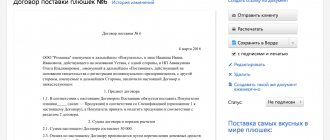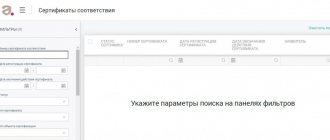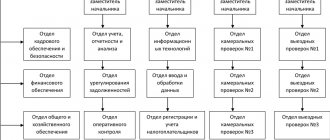From time to time, each legal entity or individual may need to find out the code of the tax authority to which this person belongs. The fact is that it is necessary to fill out some reporting forms. In this material we will talk about tax authorities and provide step-by-step instructions on how to find out the tax authority code.
The tax authorities of our country are represented by an integral system of a centralized nature. They exercise control over taxpayers and the timely fulfillment of their obligations to the state, which consist in the transfer of tax contributions to the country's budget. In addition, the tax system ensures law and order in all aspects of tax relations. It is represented in Russia by the Federal Tax Service, which has numerous divisions. It belongs to the executive branch, and is a “branch” of the Ministry of Finance of the Russian Federation.
How to find out the tax authority code
Some educational information
The tax service system as it currently operates was established in September 2004, according to a government decree. It legally represents the Russian Ministry of Finance and regulates tax relations in the country.
The power inherent in this service is executive in nature. Some of her responsibilities include conducting the registration procedure:
- for legal entities;
- individuals acquiring the status of individual entrepreneurs.
In addition, the service is authorized to represent various cases concerning the ruin (bankruptcy) of people and organizations, claims payments for financial obligations, etc.
The tax office works in conjunction with other systems:
- located at the federal level and holding executive power;
- located in the territories of constituent entities of the Russian Federation, also representing executive power;
- responsible for local self-government;
- country funds outside the budget;
- social unions;
- other organizations.
The centralized system in question is represented by a network of territorial offices located in each subject of the Russian Federation.
Table 1. Main tasks of tax authorities
| Task | Description |
| Monitoring compliance with the law | Carrying out control activities, monitoring compliance with legal norms regarding the deduction of taxes to the treasury, including the correctness of the procedure. Mandatory attention is paid to the completeness of the amount and timeliness of the payment. |
| Public policy development | Carrying out the development of state policy regarding tax relations and the introduction of measures selected for implementation in order to ensure full and timely filling of the budget with tax deductions. |
| Currency control | Exercising control over currency within the scope of issues relating to the service. |
In addition to its obligations and tasks, the tax service has the right to exercise certain powers. Let's look at them in detail.
- Monitor and supervise how compliance with tax legislation is carried out, while checking how correctly, timely and completely taxpayers have paid their due deductions to the state treasury. In addition, they monitor the authorities and work of tax agents who calculate deductions. The correctness of documents, various forms, declarations and certificates is also checked. Together with the transfers, they are submitted to the tax service for the reporting procedure.
- The Tax Service monitors currency transactions carried out by people who are tax residents of the country and who are not.
- The powers of the system also include the implementation of the registration procedure for persons: individuals;
- legal.
- persons obliged to pay taxes in the register of taxpayers;
- what current fees and deductions to the state are valid today;
- notifications sent to taxpayers containing requirements for payment of deductions;
- IP;
In addition to powers, the service has rights. Let's look at them in the list below:
- The Service has the right to carry out regulation of a legal nature, but only in cases where this is provided for in the Federal Law, decrees of the Russian President or government regulations.
- The service’s rights also include requesting documentation from taxpayers, which may serve as confirmation of the correctness of the accrual and payment of taxes, in addition to the fact that this procedure was carried out on time.
- The right to conduct control checks, during which to seize the necessary documentation confirming the commission of violations in the field of tax legislation, but only if there are assumptions that it may soon be destroyed or modified.
- Require tax payers to provide any explanations regarding tax deductions made by them on the territory of the tax authority.
- Stop carrying out transactions on the bank accounts of the payers of deductions, as well as seize the property in their possession.
- Conduct an inspection of premises that the taxpayer may use, be it: warehouses;
- outlets;
- rooms of a different type.
What code to put and why
Code at the place of registration, which serves as a taxpayer identifier in the Federal Tax Service database by category, and answers the following questions:
- whether the taxpayer is a legal entity or has the status of an individual entrepreneur;
- the organization is “ordinary” or it is the largest taxpayer;
- reporting is submitted on behalf of the main office of the company or its separate division;
- Russian or foreign organization;
- reports are submitted by a notary, lawyer, entrepreneur or individual, etc.
Question: An individual entrepreneur carries out retail trade in several retail outlets located in different areas of Moscow with different OKTMO codes, and is registered as a UTII payer with the tax office at the location of one of them. Is an entrepreneur required to indicate the OKTMO code for each outlet in 6-NDFL calculations and in 2-NDFL certificates? Is it necessary to pay personal income tax for each outlet using a separate payment order? View answer
Any taxpayer submitting reporting information to the Federal Tax Service in the form of a declaration or calculation (legal entity, individual, entrepreneur) is required to use this code.
Attention! The location (accounting) code is given for use in ready-made form for each legally approved form. Independent compilation and use of codes is prohibited.
The main code that most legal entities use will be 214 “At the location of the Russian organization” (provided that it is not the largest taxpayer). The main code for entrepreneurs will be 120, at their place of residence.
How to fill out the field “At location (accounting) (code)” in the 6-NDFL calculation?
Note that the analogue of the latter in the VAT return will be code 116. The coding for this tax is the most complex and extensive, it consists of 17 codes and takes into account many nuances accompanying personal income tax calculations.
The smallest number of codes contains transport tax - 3. Fiscal authorities are interested in the location of the vehicle, the location of the largest taxpayer or his legal successor and the coding corresponding to these economic facts.
The “simplified” reporting area contains the same number of codes. The largest taxpayers do not appear here due to the specific application of the specified tax regime; only the standard code for individual entrepreneurs at the place of residence, the code for the location of a Russian legal entity, is used. persons here will be 210. In addition, the code 215 is used, indicating the legal successor of the organization. This code, with rare exceptions, is mentioned in all regulations on the topic we are considering, since identifying the successor of the organization when it comes to paying taxes is important for the fiscal authorities.
The codes are recorded in detail in the regulatory documents of the tax service, a list of which is given below.
Attention! The largest tax payers this year include organizations that paid taxes to the federal treasury in the amount of 1 billion rubles. or more. For communications organizations and transport workers, this figure is lower – 0.3 billion rubles. Income and assets according to reports – from 20 billion rubles. In this sense, enterprises of the defense complex have their own characteristics.
Find out the tax authority code: detailed instructions
As we have already said, codes from one of the tax service departments are almost always used to fill out important papers, tax forms, declarations and other reporting forms to the system. They are represented by a certain set of numbers, there are four in total. Each service branch is assigned an individual combination, divided into two parts:
- the first two digits indicate the region in which the service branch is located;
- the second two digits are individual for each branch.
When filling out the declaration paper for reporting, the taxpayer enters inside the code of the service department to which he belongs according to:
- place of residence;
- conducting activities, etc.
So, what are the ways to find out the code of the tax office that you personally belong to? Let's look at the options we came up with and analyze each in detail.
According to the taxpayer's residential address
You can find out the code of the tax service department in order to enter it into the document according to your residential address.
Enter the address on the service website and find out the code
Step No. 1 – open the official website of the service
Let's go to the electronic resource of the tax service. This service helps taxpayers determine the details of the required Federal Tax Service inspection. With its help, you will receive the necessary information without leaving the walls of your home, and without even getting up from your desk.
Step No. 2 – enter the data into the form that opens
The data entry procedure has been simplified to the point of impossibility. First of all, you need to select the type of taxpayer, there are two options:
- entity;
- individual.
Then you need to indicate the address of the payer. An additional window will open in which you can fill in the following columns:
- index;
- subject of the Russian Federation (you can specify the region code with a number and the system will find the city automatically);
- address (Moscow, Lenina St.);
- House number;
- building body;
- apartment number.
As soon as the filling is completed, the column “IFTS code” will be automatically filled in, in which the four-digit code of the authority will appear.
Note! Depending on the selected type of taxpayer, the code may change due to a change in the person’s affiliation with the tax branch.
By taxpayer identification number
This number is assigned to each payer of contributions to the treasury individually; everyone has their own. When you receive the certificate containing it from the inspection, you also receive a tax registration, therefore, its code is also included in the required identification number.
You can find out the code using a certificate of assignment of an individual taxpayer number
Step No. 1 – find evidence
Just take it out of your folder or any other place where you keep important papers.
Step No. 2 – determine the inspection code
Please note the identification number. Its first four numeric values are the code of the tax office to which you belong. It is followed by six more - these are already personal, individual numbers for each individual. The remaining two mark the certificate itself and are needed to facilitate its finding in databases.
TIN structure, excerpt from the order of the Federal Tax Service of Russia N ММВ-7-6/435
Personal inspection visit
You can find out the inspection code the old fashioned way by visiting the tax office you went to before or the closest one. Even if you are not one of them, his staff will provide advice in any case.
Personal visit is another option for finding out the code
Step No. 1 – sign up for a consultation
It may not be possible to simply come to the service and get a consultation on a first-come, first-served basis; it is best to get an appointment by appointment. By the way, you don’t need to visit the tax office twice to do this. Just open the Internet, go to the official electronic resource of the Federal Tax Service, go to the appropriate section and sign up for the queue online by filling out the form.
It must indicate:
- what type of taxpayer you are;
- last name, first name, patronymic of the visitor;
- taxpayer identification number;
- cellular telephone;
- E-mail address.
Before planning a trip to a branch of the service, it is best to check on the same electronic resource what hours consultations are held, when it is lunch break, etc.
Step No. 2 – visit the inspection
On the day appointed for consultation, attend the inspection. If you don’t know where to go next, you can get information from the person at the reception or at the information desk. It is best not to be late, because this can anger the consultant and reduce his level of disposition towards you.
We make a call to the Unified Contact Center of the Tax Service
The last method, which also does not oblige you to leave your home to clarify the inspection code to which you belong, is to call the service’s Unified Contact Center from your phone. It is free for residents of any region since 2015.
Consultations provided by this number may relate to:
- time frame for payment of tax contributions;
- stages and nuances of the registration procedure;
- receiving tax deductions for taxes paid;
- using tax service services located on the Internet;
- work schedule of local inspection offices;
- inspection codes, etc.
As you can see, the list is quite extensive, therefore, in addition to the inspection code, you can ask many questions on other topics that interest you.
When working, contact center operators use not only their own knowledge, but also a federal information base, so you can be sure that the data received is correct.
Step No. 1 – call the Unified Contact Center
You can make a call to the Unified Contact Center from a cell phone or landline by dialing the following number: 8 800-222-22-22 . If all operators are busy at the time of the call, do not rush to hang up, wait a few minutes until one of the consultants is free.
Step #2 – ask a question
When you call, you have unlimited time to talk with the operator. Of course, there can be no talk of idle chatter, but there is no need to rush either. Find out the code, write it down on paper or on your phone, and then ask the remaining questions.
Video - How to find out tax details, find out tax office address and make an appointment
Regions of RUSSIA with codes 2021.
According to Article 65 of the Constitution of the Russian Federation, the following subjects of the Russian Federation are part of the Russian Federation.
| Name of the subject of the Russian Federation | Subject code | Traffic police code - traffic police | OKATO and OKTMO code | Code ISO 3166-2 and GOST 7.67-2003 |
| Republic of Adygea | 01 | 01 | 79 | RU-AD |
| Altai Republic | 04 | 04 | 84 | RU-AL |
| Republic of Bashkortostan | 02 | 02, 102 | 80 | RU-BA |
| The Republic of Buryatia | 03 | 03 | 81 | RU-BU |
| The Republic of Dagestan | 05 | 05 | 82 | RU-DA |
| The Republic of Ingushetia | 06 | 06 | 26 | RU-IN |
| Kabardino-Balkarian Republic | 07 | 07 | 83 | RU-KB |
| Republic of Kalmykia | 08 | 08 | 85 | RU-KL |
| Karachay-Cherkess Republic | 09 | 09 | 91 | RU-KC |
| Republic of Karelia | 10 | 10 | 86 | RU-KR |
| Komi Republic | 11 | 11, 111 | 87 | RU-KO |
| Republic of Crimea | 91 | 82 | 35 | RU-CR |
| Mari El Republic | 12 | 12 | 88 | RU-ME |
| The Republic of Mordovia | 13 | 13, 113 | 89 | RU-MO |
| The Republic of Sakha (Yakutia) | 14 | 14 | 98 | RU-SA |
| Republic of North Ossetia-Alania | 15 | 15 | 90 | RU-SE |
| Republic of Tatarstan | 16 | 16, 116 | 92 | RU-TA |
| Tyva Republic | 17 | 17 | 93 | RU-TY |
| Udmurt republic | 18 | 18 | 94 | RU-UD |
| The Republic of Khakassia | 19 | 19 | 95 | RU-KK |
| Chechen Republic | 20 | 95 | 96 | RU-CE |
| Chuvash Republic | 21 | 21, 121 | 97 | RU-CU |
| Altai region | 22 | 22 | 01 | RU-ALT |
| Transbaikal region | 75 | 75, 80 | 76 | RU-ZAB |
| Kamchatka Krai | 41 | 41 | 30 | RU-KAM |
| Krasnodar region | 23 | 23, 93, 123 | 03 | RU-KDA |
| Krasnoyarsk region | 24 | 24, 124, 84, 88 | 04 | RU-KYA |
| Perm region | 59 | 59, 81, 159 | 57 | RU-PER |
| Primorsky Krai | 25 | 25, 125 | 05 | RU-PRI |
| Stavropol region | 26 | 26, 126 | 07 | RU-STA |
| Khabarovsk region | 27 | 27 | 08 | RU-KHA |
| Amur region | 28 | 28 | 10 | RU-AMU |
| Arhangelsk region | 29 | 29 | 11 | RU-ARK |
| Astrakhan region | 30 | 30 | 12 | RU-AST |
| Belgorod region | 31 | 31 | 14 | RU-BEL |
| Bryansk region | 32 | 32 | 15 | RU-BRY |
| Vladimir region | 33 | 33 | 17 | RU-VLA |
| Volgograd region | 34 | 34, 134 | 18 | RU-VGG |
| Vologda Region | 35 | 35 | 19 | RU-VLG |
| Voronezh region | 36 | 36, 136 | 20 | RU-VOR |
| Ivanovo region | 37 | 37 | 24 | RU-IVA |
| Irkutsk region | 38 | 38, 138, 85 | 25 | RU-IRK |
| Kaliningrad region | 39 | 39, 91 | 27 | RU-KGD |
| Kaluga region | 40 | 40 | 29 | RU-KLU |
| Kemerovo region | 42 | 42, 142 | 32 | RU-KEM |
| Kirov region | 43 | 43 | 33 | RU-KIR |
| Kostroma region | 44 | 44 | 34 | RU-KOS |
| Kurgan region | 45 | 45 | 37 | RU-KGN |
| Kursk region | 46 | 46 | 38 | RU-KRS |
| Leningrad region | 47 | 47 | 41 | RU-LEN |
| Lipetsk region | 48 | 48 | 42 | RU-LIP |
| Magadan Region | 49 | 49 | 44 | RU-MAG |
| Moscow region | 50 | 50, 90, 150, 190, 750 | 46 | RU-MOS |
| Murmansk region | 51 | 51 | 47 | RU-MUR |
| Nizhny Novgorod Region | 52 | 52, 152 | 22 | RU-NIZ |
| Novgorod region | 53 | 53 | 49 | RU-NGR |
| Novosibirsk region | 54 | 54, 154 | 50 | RU-NVS |
| Omsk region | 55 | 55 | 52 | RU-OMS |
| Orenburg region | 56 | 56 | 53 | RU-ORE |
| Oryol Region | 57 | 57 | 54 | RU-ORL |
| Penza region | 58 | 58 | 56 | RU-PNZ |
| Pskov region | 60 | 60 | 58 | RU-PSK |
| Rostov region | 61 | 61, 161 | 60 | RU-ROS |
| Ryazan Oblast | 62 | 62 | 61 | RU-RYA |
| Samara Region | 63 | 63, 163 | 36 | RU-SAM |
| Saratov region | 64 | 64, 164 | 63 | RU-SAR |
| Sakhalin region | 65 | 65 | 64 | RU-SAK |
| Sverdlovsk region | 66 | 66, 96, 196 | 65 | RU-SVE |
| Smolensk region | 67 | 67 | 66 | RU-SMO |
| Tambov Region | 68 | 68 | 68 | RU-TAM |
| Tver region | 69 | 69 | 28 | RU-TVE |
| Tomsk region | 70 | 70 | 69 | RU-TOM |
| Tula region | 71 | 71 | 70 | RU-TUL |
| Tyumen region | 72 | 72 | 71 | RU-TYU |
| Ulyanovsk region | 73 | 73, 173 | 73 | RU-ULY |
| Chelyabinsk region | 74 | 74, 174 | 75 | RU-CHE |
| Yaroslavl region | 76 | 76 | 78 | RU-YAR |
| Moscow | 77 | 77, 97, 99, 177, 197, 199, 777 | 45 | RU-MOW |
| Saint Petersburg | 78 | 78, 98, 178 | 40 | RU-SPE |
| Sevastopol | 92 | 92 | 67 | RU-SEV |
| Jewish Autonomous Region | 79 | 79 | 99 | RU-YEV |
| Nenets Autonomous Okrug | 83 | 83 | 11-8 | RU-NEN |
| Khanty-Mansiysk Autonomous Okrug - Ugra | 86 | 86, 186 | 71-8 | RU-KHM |
| Chukotka Autonomous Okrug | 87 | 87 | 77 | RU-CHU |
| Yamalo-Nenets Autonomous Okrug | 89 | 89 | 71-9 | RU-YAN |
| Baikonur (Kazakhstan) | — | 94 | — | — |
For reference - excerpts from the Constitution of the Russian Federation
Adopted by popular vote on December 12, 1993, with amendments approved during the all-Russian vote on July 1, 2020
SECTION ONE. CHAPTER 3. FEDERAL STRUCTURE
Article 65
1. The Russian Federation includes the following subjects of the Russian Federation:
Republic of Adygea (Adygea), Republic of Altai, Republic of Bashkortostan, Republic of Buryatia, Republic of Dagestan, Republic of Ingushetia, Kabardino-Balkarian Republic, Republic of Kalmykia, Karachay-Cherkess Republic, Republic of Karelia, Komi Republic, Republic of Crimea, Mari El Republic, Mordovia Republic, Republic of Sakha (Yakutia), Republic of North Ossetia - Alania, Republic of Tatarstan (Tatarstan), Republic of Tyva, Udmurt Republic, Republic of Khakassia, Chechen Republic, Chuvash Republic - Chuvashia;
Altai Territory, Transbaikal Territory, Kamchatka Territory, Krasnodar Territory, Krasnoyarsk Territory, Perm Territory, Primorsky Territory, Stavropol Territory, Khabarovsk Territory;
Amur region, Arkhangelsk region, Astrakhan region, Belgorod region, Bryansk region, Vladimir region, Volgograd region, Vologda region, Voronezh region, Ivanovo region, Irkutsk region, Kaliningrad region, Kaluga region, Kemerovo region - Kuzbass, Kirov region, Kostroma region, Kurgan region, Kursk region, Leningrad region, Lipetsk region, Magadan region, Moscow region, Murmansk region, Nizhny Novgorod region, Novgorod region, Novosibirsk region, Omsk region, Orenburg region, Oryol region, Penza region, Pskov region, Rostov region, Ryazan region , Samara region, Saratov region, Sakhalin region,
Sverdlovsk region, Smolensk region, Tambov region, Tver region, Tomsk region, Tula region, Tyumen region, Ulyanovsk region, Chelyabinsk region, Yaroslavl region;
Moscow, St. Petersburg, Sevastopol - cities of federal significance;
Jewish Autonomous Region;
Nenets Autonomous Okrug, Khanty-Mansiysk Autonomous Okrug - Yugra, Chukotka Autonomous Okrug, Yamalo-Nenets Autonomous Okrug.
2. Admission to the Russian Federation and the formation of a new subject within it are carried out in the manner established by federal constitutional law.
Article 66
- 1. The status of the republic is determined by the Constitution of the Russian Federation and the constitution of the republic.
- 2. The status of a territory, region, federal city, autonomous region, autonomous district is determined by the Constitution of the Russian Federation and the charter of the region, region, federal city, autonomous region, autonomous district, adopted by the legislative (representative) body of the corresponding subject of the Russian Federation.
- 3. Upon the proposal of the legislative and executive bodies of an autonomous region, an autonomous okrug, a federal law on an autonomous region, an autonomous okrug may be adopted.
- 4. Relations between autonomous okrugs that are part of a territory or region may be regulated by federal law and an agreement between the state authorities of the autonomous region and, accordingly, the state authorities of the territory or region.
- 5. The status of a subject of the Russian Federation can be changed by mutual consent of the Russian Federation and the subject of the Russian Federation in accordance with the federal constitutional law.
Article 67
- 1. The territory of the Russian Federation includes the territories of its subjects, internal waters and territorial sea, and the airspace above them. Federal territories may be created on the territory of the Russian Federation in accordance with federal law. The organization of public power in federal territories is established by the specified federal law.
- 2. The Russian Federation has sovereign rights and exercises jurisdiction on the continental shelf and in the exclusive economic zone of the Russian Federation in the manner determined by federal law and international law.
21. The Russian Federation ensures the protection of its sovereignty and territorial integrity. Actions (with the exception of delimitation, demarcation, re-demarcation of the state border of the Russian Federation with neighboring states) aimed at alienating part of the territory of the Russian Federation, as well as calls for such actions *i are not allowed.
- 3. The borders between the constituent entities of the Russian Federation can be changed with their mutual consent.
The wording of articles, parts and paragraphs marked with the symbol is given in accordance with the Law of the Russian Federation on the amendment to the Constitution of the Russian Federation of March 14, 2021 No. 1-FKZ “On improving the regulation of certain issues of the organization and functioning of public power.” The changes introduced by the said Law of the Russian Federation on Amendments to the Constitution of the Russian Federation come into force on the day of the official publication of the results of the all-Russian vote on the issue of approval of changes to the Constitution of the Russian Federation.
1
The new name of the Republic was given in accordance with Decree of the President of the Russian Federation of January 9, 1996 No. 20 “On the inclusion of new names of the subjects of the Russian Federation in Article 65 of the Constitution of the Russian Federation” (Collected Legislation of the Russian Federation, 1996, No. 3, Art. 152).
2
The new name of the Republic was given in accordance with Decree of the President of the Russian Federation of February 10, 1996 No. 173 “On the inclusion of a new name of the subject of the Russian Federation in Article 65 of the Constitution of the Russian Federation” (Collected Legislation of the Russian Federation, 1996, No. 7, Art. 676).
3
The name of the new subject of the Russian Federation - the Republic of Crimea - was given in accordance with the Federal Constitutional Law of March 21, 2014 No. 6-FKZ “On the admission of the Republic of Crimea to the Russian Federation and the formation of new subjects within the Russian Federation - the Republic of Crimea and the federal city of Sevastopol "(Collected Legislation of the Russian Federation, 2014, No. 12, Art. 1201).
4
The new name of the Republic was given in accordance with Decree of the President of the Russian Federation of January 9, 1996 No. 20 “On the inclusion of new names of the subjects of the Russian Federation in Article 65 of the Constitution of the Russian Federation” (Collected Legislation of the Russian Federation, 1996, No. 3, Art. 152).
5
The new name of the Republic was given in accordance with Decree of the President of the Russian Federation of June 9, 2001 No. 679 “On the inclusion of a new name of the subject of the Russian Federation in Article 65 of the Constitution of the Russian Federation” (Collected Legislation of the Russian Federation, 2001, No. 24, Art. 2421).
6
The name of the new subject of the Russian Federation - Trans-Baikal Territory - was given in connection with its formation on March 1, 2008, and the names of the Chita Region and the Aginsky Buryat Autonomous Okrug, which ceased to exist on March 1, 2008 as subjects of the Russian Federation, are excluded from Part 1 of Article 65 The Constitution of the Russian Federation on the basis of the Federal Constitutional Law of July 21, 2007 No. 5-FKZ “On the formation within the Russian Federation of a new subject of the Russian Federation as a result of the unification of the Chita region and the Aginsky Buryat Autonomous Okrug” (Collected Legislation of the Russian Federation, 2007, No. 30 , art. 3745).
7
The name of the new subject of the Russian Federation - Kamchatka Territory - was given in connection with its formation on July 1, 2007, and the names of the Kamchatka Region and Koryak Autonomous Okrug, which ceased to exist on July 1, 2007 as subjects of the Russian Federation, are excluded from Part 1 of Article 65 of the Constitution of the Russian Federation on the basis of the Federal Constitutional Law of July 12, 2006 No. 2-FKZ “On the formation within the Russian Federation of a new subject of the Russian Federation as a result of the unification of the Kamchatka Region and the Koryak Autonomous Okrug” (Collected Legislation of the Russian Federation, 2006, No. 29, Art. . 3119).
8
The name of the new subject of the Russian Federation - Krasnoyarsk Territory - is given in connection with its formation on January 1, 2007, and the names of the Taimyr (Dolgano-Nenets) Autonomous Okrug and the Evenki Autonomous Okrug, which ceased to exist on January 1, 2007 as subjects of the Russian Federation, are excluded from Part 1 of Article 65 of the Constitution of the Russian Federation on the basis of the Federal Constitutional Law of October 14, 2005 No. 6-FKZ “On the formation within the Russian Federation of a new subject of the Russian Federation as a result of the unification of the Krasnoyarsk Territory, the Taimyr (Dolgano-Nenets) Autonomous Okrug and the Evenki Autonomous Okrug" (Collected Legislation of the Russian Federation, 2005, No. 42, Art. 4212).
9
The name of the new subject of the Russian Federation - Perm Territory - is given in connection with its formation on December 1, 2005, and the names of the Perm Region and Komi-Permyak Autonomous Okrug, which ceased to exist on December 1, 2005 as subjects of the Russian Federation, are excluded from part 1 of the article 65 of the Constitution of the Russian Federation on the basis of the Federal Constitutional Law of March 25, 2004 No. 1-FKZ “On the formation within the Russian Federation of a new subject of the Russian Federation as a result of the unification of the Perm region and the Komi-Permyak Autonomous Okrug” (Collection of Legislation of the Russian Federation, 2004, No. 13, Art. 1110).
10
The name of the new subject of the Russian Federation - Irkutsk region - was given in connection with its formation on January 1, 2008, and the name of the Ust-Orda Buryat Autonomous Okrug, which ceased to exist on January 1, 2008 as a subject of the Russian Federation, was excluded from part 1 of Article 65 of the Constitution of the Russian Federation on the basis of the Federal Constitutional Law of December 30, 2006 No. 6-FKZ “On the formation within the Russian Federation of a new subject of the Russian Federation as a result of the unification of the Irkutsk region and the Ust-Orda Buryat Autonomous Okrug” (Collected Legislation of the Russian Federation, 2007, No. 1, art. 1).
11
The new name of the region was given in accordance with Decree of the President of the Russian Federation of March 27, 2021 No. 130 “On the inclusion of a new name of the subject of the Russian Federation in Article 65 of the Constitution of the Russian Federation” (Collected Legislation of the Russian Federation, 2021, No. 13, Art. 1390).
12
The name of the new subject of the Russian Federation - the federal city of Sevastopol - was given in accordance with the Federal Constitutional Law of March 21, 2014 No. 6-FKZ “On the admission of the Republic of Crimea to the Russian Federation and the formation of new subjects within the Russian Federation - the Republic of Crimea and the federal city significance of Sevastopol" (Collected Legislation of the Russian Federation, 2014, No. 12, Art. 1201).
13
The new name of the Autonomous Okrug was given in accordance with Decree of the President of the Russian Federation of July 25, 2003 No. 841 “On the inclusion of a new name of the subject of the Russian Federation in Article 65 of the Constitution of the Russian Federation” (Collected Legislation of the Russian Federation, 2003, No. 30, Art. 3051) .
Let's sum it up
As you can see, finding out the inspection code for filling out specialized tax reporting forms is not so difficult; there is a fairly diverse number of ways to complete this task. Some require you to take some time to appear in person and/or talk with a service consultant, but you can find out the code in a minute by simply looking at your taxpayer identification number or entering the necessary data into the computer.
Note! Tax service websites are adapted for viewing via smartphones on any existing operating system. The service’s specialists did everything to ensure that citizens could find out the information they were interested in as conveniently and quickly as possible.
There are many ways to find out the IRS code








